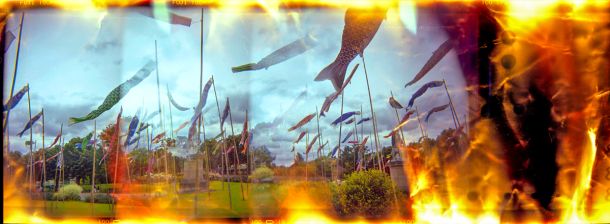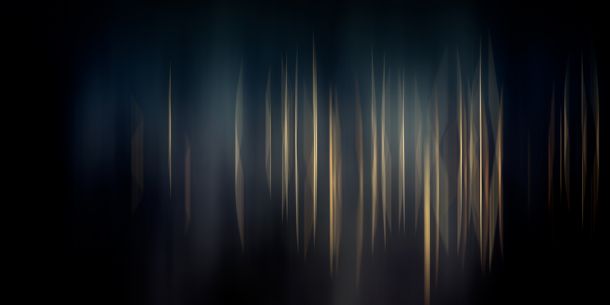Photography: From Technique to Artistic Recognition

Chevrolet Bel Air – Photo : © Dingo
How did photography earn its place in the world of contemporary art? Long confined to the role of a simple reproducible technique, photography has gradually established itself as a fully-fledged artistic medium. This article explores the evolution of its status, the criteria of creative originality, and its definitive integration into cultural institutions—revealing how photographers have developed a unique visual language that transcends mere documentation of reality.
Table of Contents
- Photography: Definition and Artistic Status
- Between Technique and Expression: The Dual Nature of Photography
- Renowned Photographers Recognized as Artists
- Photography as an Original Creation
- Institutional and Market Recognition
Photography: Definition and Artistic Status
The Historical Evolution of Perceptions Around Photography
Photography was born thanks to Nicéphore Niépce, who captured the first fixed image in 1826 using bitumen of Judea on a silver plate, requiring several days of exposure. In 1839, Louis Daguerre’s daguerreotype marked a turning point in photographic history.
Photography gradually evolved from a technical tool to an artistic form. As early as the 19th century, photographers like Diane Arbus explored creative approaches. Pictorialism played an early role in this transition. Today, photography is displayed in the world’s most prestigious galleries and museums. The history of photography demonstrates how the medium transformed from a technical process into a recognized art form.
The Defining Criteria of Fine Art Photography
Fine art photography stands out through its originality and the personal imprint of the photographer. Creative intent is essential, as are the technical and conceptual choices made by the creator. Recognizing fine art photography depends on these and other criteria.
| Criteria | Documentary Photography | Commercial Photography | Fine Art Photography |
|---|---|---|---|
| Purpose | Document reality, inform, raise awareness | Promote a product/service, drive sales | Express a personal vision, evoke emotion/thought |
| Style | Neutral (in appearance), with photographer’s subjectivity | Polished, targeted aesthetic | Free, creative, original, and subjective |
| Main Use | Reports, archives, social studies | Advertising, catalogs, social media | Exhibitions, galleries, private collections |
| Funding | Public grants, institutional commissions | Brand and corporate budgets | Print sales, public grants, private commissions |
An original print is produced by or under the control of the photographer, signed and numbered. In France, the law limits editions to a maximum of 12 prints across all formats. This numbering has legal, fiscal, and commercial value. A certificate of authenticity often accompanies the print, guaranteeing its origin and value.
The Debate on Photography’s Artistic Status
Initially, photography was seen as a mere technical tool, inferior to painting and sculpture. It was criticized for merely reproducing reality without artistic creation. Art institutions long relegated photography to a documentary or commercial role, regarding it as a minor art.
Case law has gradually evolved, recognizing photography’s artistic value. Courts now assess originality based on the photographer’s creative decisions. In 1988, the Court of Justice of the European Union made a landmark ruling protecting a wedding photo as an artistic work. Today, originality is judged case by case, recognizing the photographer’s subjectivity.
Between Technique and Expression: The Dual Nature of Photography
Between Technique and Expression: The Dual Nature of Photography
Photography blends technique and creativity. Equipment and settings are necessary, but the photographer’s personal expression gives the work its soul. This dual nature explains the ongoing debates about its artistic status.
- Experiment with composition: organize lines, shapes, and planes within the frame
- Master light: use creative lighting to enhance the scene
- Transcend reality: leverage digital manipulation to add an artistic dimension
- Express emotions: convey a personal message through subject and framing
- Shadows as expressive elements: play with contrast to enhance atmosphere
The photographer’s eye transforms reality. Choices about framing, lighting, and post-processing reflect a unique vision. Technique becomes a vehicle for personal expression, making each image distinctive. The balance between technical mastery and creativity defines the artistic quality of the work.
Originality in photography lies in the photographer’s decisions. Framing, lighting, and visual effects reflect their personality. These unique choices make photography a true creative act, despite its reproducible nature.
Renowned Photographers Recognized as Artists
Introduction to Pioneering Photographers
Henri Cartier-Bresson, Ansel Adams, and Diane Arbus played a decisive role in the artistic recognition of photography. Cartier-Bresson founded Magnum Photos in 1947; Adams elevated landscape photography to art with his images of the American West; and Arbus explored marginalized subjects with sensitivity. Contemporary photographers like them have shaped photographic history.
Defining Features of Photographic Masterpieces
- Bearing the artist’s personal imprint: reflecting a unique and original vision
- Provoking aesthetic emotion: evoking a visceral reaction from the viewer
- Conveying a deep message: going beyond mere representation of reality
- Mastering color temperature: using tones to influence atmosphere
- Creating visual storytelling: guiding the viewer’s eye through a visual narrative
The Influence of Artistic Movements on Photography
Photography has drawn from artistic movements to assert itself in the art world. Pictorialism mimicked painterly effects; Surrealism opened doors to manipulation and experimentation. Modern movements like Constructivism allowed photography to gain confidence. Interactions between photography and artistic movements shaped its integration into the broader art scene. This page analyzes the links between photography and movements such as Surrealism and Modernism, enriching the section on how these influences supported photography’s artistic recognition.
Photography as an Original Creation
Subjectivity and Artistic Intention in Photography
Subjectivity in photography is expressed through subject choice, framing, and angle. These decisions reflect the photographer’s personal vision, turning a simple shot into a unique artistic expression.
Artistic intent gives photography meaning. It guides technical and conceptual decisions, allowing the capture of emotions and deep messages. A photographer uses light, framing, and composition to share a personal vision, building an emotional connection with the viewer. This creative approach mirrors that of painters and sculptors, where intent shapes the work.
Photography transforms fleeting moments into lasting works. A photograph captures a unique moment, freezing the ephemeral into a timeless image. This ability to stop time is an artistic feature that sets photography apart from other forms of art.
Creative Aspects Unique to Photography
Photography stands out for its ability to capture reality subjectively. Unlike painting, it relies on a real moment to produce a unique visual interpretation.
Work on light, composition, and the decisive moment forms the foundation of photographic expression. Light sculpts the image, composition directs the viewer’s gaze, and the decisive moment captures the heart of a scene. According to Henri Cartier-Bresson, this “decisive moment” is when the elements of a scene align perfectly, revealing the harmony of a fleeting instant.
Technical limitations stimulate creativity. Equipment constraints or lighting conditions push photographers to innovate. By turning challenges into opportunities, artists explore new expressive paths, constantly renewing the language of photography.
Institutional and Market Recognition
Photography in Museums and Galleries
Photography has gradually gained a place in major art institutions. In 1859, the Société Française de Photographie marked a turning point in its recognition. The Nicéphore Niépce Museum in France and the MET in New York now exhibit photographic works, changing public and critical perception of the medium.
Contemporary curatorial strategies integrate photography on par with other artistic media. The Centre Pompidou and Musée d’Orsay include photographs in their permanent collections. In 2018, France’s Ministry of Culture supported 47 regional art centers, 9 of which specialize in photography. Exhibitions are evolving to include artist dialogues and social commentary.
The Fine Art Photography Market
The fine art photography market has seen notable growth, with the economic recognition of its value. The limited and numbered print system underpins its market value. Buying original prints illustrates this economic appreciation. In 2017, global auction sales reached $163 million.
The art photography market revolves around authenticity, rarity, and provenance. A print limited to 12 prints with a certificate of authenticity ensures its value. Proper conservation practices protect against light and humidity. Key players include galleries, auction houses, and collectors. Paris Photo, the world’s largest international photography fair, brings together 133 galleries from 21 countries.
Photography is now fully integrated into the global art ecosystem. The boundaries between it and other art forms are increasingly blurred. Photographs like Man Ray’s “Le Violon d’Ingres,” sold for $12.4 million, or Andreas Gursky’s “Rhein II,” sold for $443,850, reflect this full recognition. Events like Paris Photo—hosting its 28th edition in 2025—affirm photography’s place as a fully recognized art form.
Photography, long debated as a minor art, now claims its place thanks to its historical foundation, unique creative scope, and institutional recognition. Exploring the works of masters like Henri Cartier-Bresson or Diane Arbus—or browsing online galleries—reveals this evolution. By embracing this understanding, you enrich your perspective on a medium where technique and subjectivity merge to capture the essence of reality, offering a unique artistic viewpoint. Photography, far more than a snapshot, is truly a form of artistic creation.



